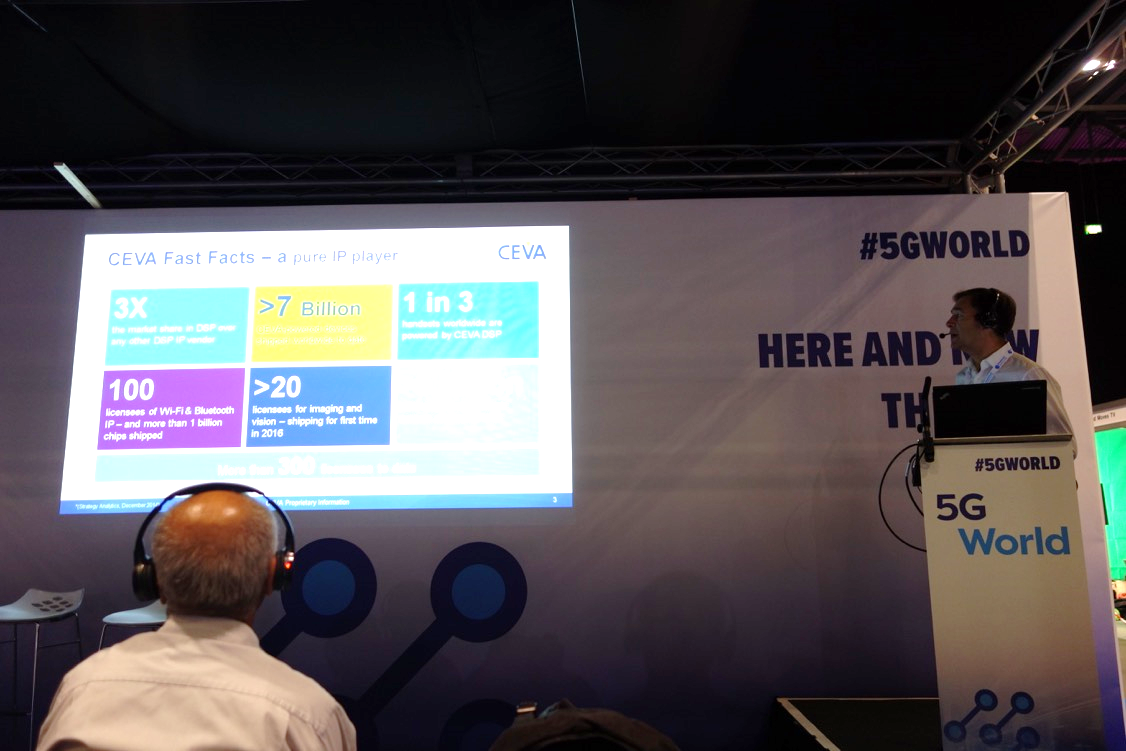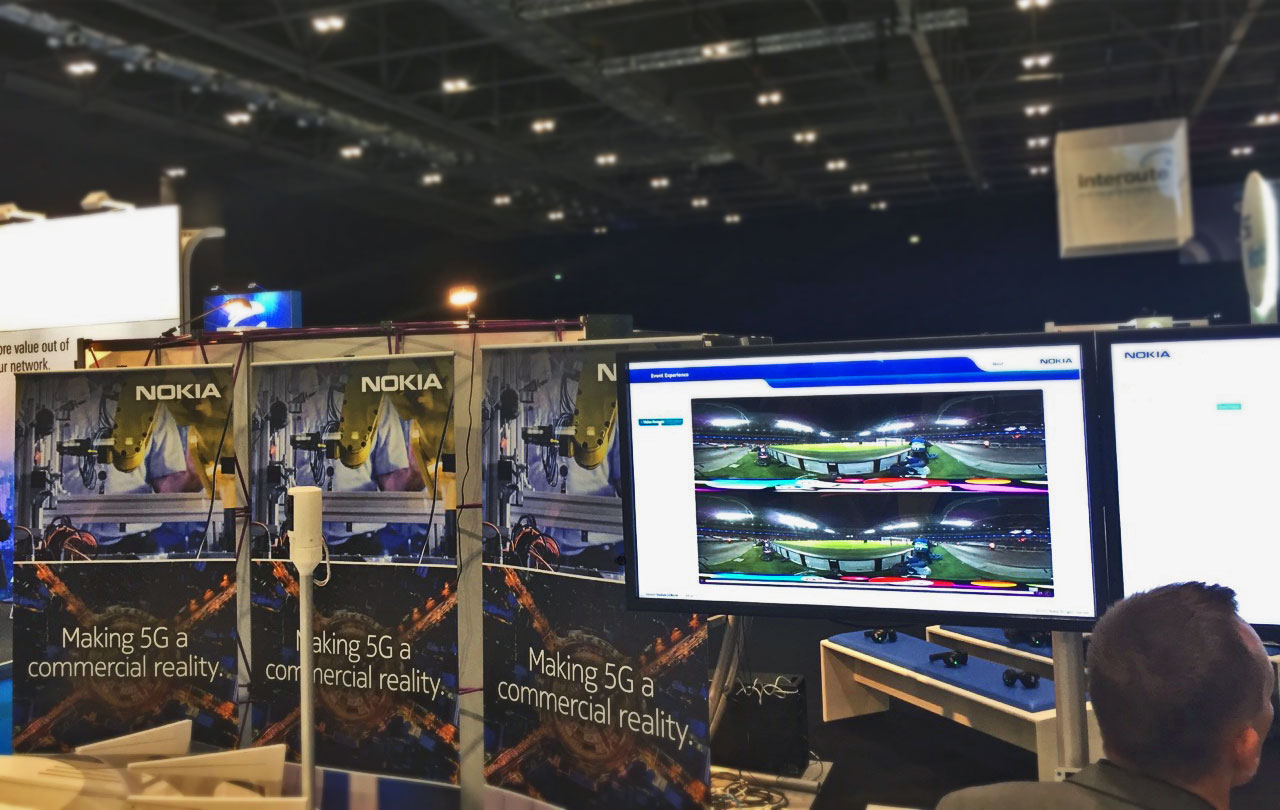After attending the 5G World conference at TechXLR8 in London, it appears that the next generation of cellular connectivity is closer than ever. Leading OEMs like Nokia, Intel, Huawei and others demonstrated how they are ready to take advantage of the possibilities that 5G New Radio (NR) will enable. Applications like command and control of remote robotics and drones which require ultra-reliable communication were demonstrated at the show, giving a glimpse into the future that 5G cellular will enable.
Our presentation, entitled Challenges and Solutions for System on Chip Architectures in 5G NR Base-stations was given by my colleague, Emmanuel Gresset, as you can see in the picture below. You can learn more about the topic by viewing our on-demand webinar 5G NR base-stations redefine the SDR paradigm: How CEVA-XC12 solves the daunting computing and latency challenges of 5G NR. Emmanuel also recently wrote a post about how the use of small cell access nodes in 5G deployment will assist in meeting the demand for ever-increasing data consumption. Read on to see some more vital aspects for today’s and future 5G SoC solutions.

Emmanuel Gresset presenting Challenges and Solutions for System on Chip Architecture in 5G NR Baseband
Flexibility is Key for Undetermined Details of 5G Standard
As the ratification of 5G NR by 3GPP inches closer, it is still not clear what the final standard will include. In one of the panels we attended, the CTO of a leading European telecoms company stated that 5G networks will start their deployment on frequencies below 6GHz, contrary to prior speculations on this topic. This is only one of many examples of the 5G specification unknowns. Until the details are finalized, a level of flexibility must be maintained. In addition to this, various flavors of pre-5G proprietary solutions are already in advanced stages of testing. Supporting these networks, while keeping the solution future-proof for 3GPP’s 5G NR standard, also requires a flexible implementation. A solution based on a software defined radio (SDR) is key to achieving this. Here is a look at some of the exciting and challenging applications that 5G will support, and the underlying technology that will enable them.
Mission Critical Support with Ultra-Reliable Low Latency Communications (URLLC)
There are many use cases that can significantly enhance life-critical behaviors. Remote healthcare services, mission critical robots, drones and connected cars are a few of the most interesting examples. To function properly, all these use cases require a reliable, near-zero latency response time. For example, Nokia had a great demo with Bosch showing a robotic arm operated by a controller over 5G. In case of emergency, the robot can be stopped with a response time of 2 ms. Current communication standards, like LTE and Wi-Fi are either not fast enough or not reliable enough to support this type of operation. To address these new use cases, 5G NR will demand intensive computations to ensure data packet reception without loss and under minimal latency. Such processing should be extremely efficient, both speed-wise and power-wise. Dedicated hardware is required to address the specific challenges of this type of processing, while being part of a scalable, programmable solution.

Nokia’s booth at 5G World, showing an immersive VR experience that will be possible thanks to 5G
The Promise of Mobile Augmented and Virtual Reality (AR/VR)
In a recent episode of the HBO series, Silicon Valley, Monica, the venture capitalist, makes a bold but true statement about VR. It is “amazing when your run it on a $10,000 rig, but the future of VR is mobile”, she says. We couldn’t agree more. As deep learning and 3D perception become mainstream in mobile devices, the clear next step is for VR, AR and mixed reality to join the mobile world. Last summer’s Pokémon Go craze showed that extremely power-efficient processors and high bandwidth are required to enable a steady supply of fresh content. 5G NR promises to make this viable. Combining a powerful communication processor with an intelligent vision processor is likely to be a winner on the market.
Learn More
Find out more about the industry’s first DSP capable of meeting the extreme performance requirements critical to the success of 5G, Gigabit LTE, MU-MIMO Wi-Fi and other multi-gigabit modems, the CEVA-XC12, here.


